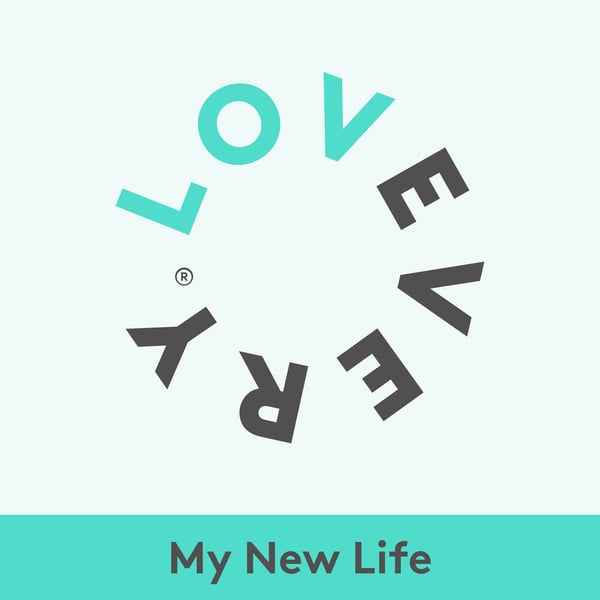Reading to Babies: How to Make Early Literacy Development Easy & Fun
My New Life
Kate Garlinge
4.7 • 654 Ratings
🗓️ 22 April 2020
⏱️ 19 minutes
🧾️ Download transcript
Summary
Jessica Rolph welcomes Sami Carrick to this episode to talk about that magical moment of connection with our baby: story time. And all those who have read a book to an infant know that it doesn’t always go as planned! We know how important it is to read to our babies, but what should we do if they are crawling out of our laps, crazily flipping pages, or just plain not interested in what’s on the page?
Sami shares how teaching literacy can take lots of forms. She is a certified reading specialist and the mom behind Literacy for Littles.
Key Takeaways:
[1:30] Reading to a newborn: Sami explains how this might look.
[2:34] Position your newborn baby so they can see your facial expressions while you are reading.
[3:04] Consider incorporating a book at nap time and bedtime to help create predictability for your baby.
[3:31] When to introduce sensory books to babies.
[4:26] Tips to engage your baby in reading when they don’t seem to be able to stop moving or are uninterested.
[6:28] Sami shares practical tips to help a child learn how to turn the pages.
[8:01] The benefits of adding rubber bands to the pages.
[8:48] How to incorporate reading in the daily routine outside of bedtime.
[10:24] The importance of using a dramatic, animated voice while reading to your baby.
[11:50] Tips for parents to teach literacy early on.
[13:54] Sami explains why learning letter sounds is more important than being able to recite the ABCs.
[16:22] The benefits of incorporating sign language into a child’s day.
Mentioned in this episode:
Brought to you by Lovevery.com
Transcript
Click on a timestamp to play from that location
| 0:00.0 | Parenthood is a time of so much change for you and your baby. |
| 0:12.7 | A little reliable information can go a long way towards making this new life a good life. |
| 0:18.6 | I'm Jessica Rolfe, and this is my new life, a love every podcast. |
| 0:29.1 | Books with torn flaps, soggy, gummed up pages. If you're a parent to a baby, this may describe |
| 0:35.4 | a good deal of your personal library, and all of this is totally normal. |
| 0:40.0 | We all long for that beautiful moment of connection over a favorite storybook, but reading with a baby can be less than relaxing. |
| 0:47.1 | We know how important it is to read to our children, but what do we do if they're squirming off our laps, flipping the pages around and just don't seem interested? |
| 0:56.5 | Today's guest is here to reassure us that teaching literacy to our children can take lots of forms. |
| 1:02.4 | Sammy Carrick is a certified reading specialist and the mom behind literacy for littles. |
| 1:08.1 | Hi, Sammy. It's so good to have you here with us. Not only are you a literacy expert, |
| 1:13.9 | but you're also a parent of a three-year-old and a 10-month-old. So welcome. Thanks so much for being |
| 1:20.8 | here. Thank you. I appreciate the opportunity. And I wanted to start with reading. We all know how |
| 1:26.0 | important it is to read to our children, but I wanted to get your tips on what it looks like to read to babies. |
| 1:32.5 | So let's take the newborn stage. |
| 1:34.6 | What tips do you have for reading to newborns? |
| 1:36.8 | I'm so glad you're starting with newborns. |
| 1:38.8 | I know it can seem a little silly to start reading to them, but they are actually absorbing so much. |
| 1:44.0 | There was this one study where |
| 1:45.1 | mothers were instructed to read Dr. Seuss out loud when they were pregnant. And then when the |
| 1:49.5 | babies were born, the researchers tested to see if they recognize the Dr. Seuss against other |
| 1:53.9 | stories and their mother's voice against other readers. And in both cases, infants were able to |
| 1:59.0 | pick up on those patterns that they heard in utero. |
... |
Please login to see the full transcript.
Disclaimer: The podcast and artwork embedded on this page are from Kate Garlinge, and are the property of its owner and not affiliated with or endorsed by Tapesearch.
Generated transcripts are the property of Kate Garlinge and are distributed freely under the Fair Use doctrine. Transcripts generated by Tapesearch are not guaranteed to be accurate.
Copyright © Tapesearch 2025.

